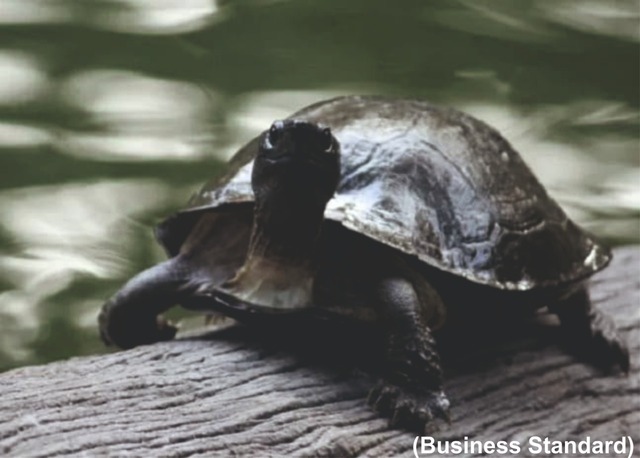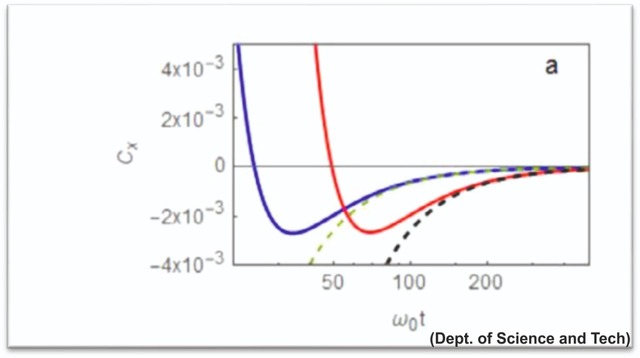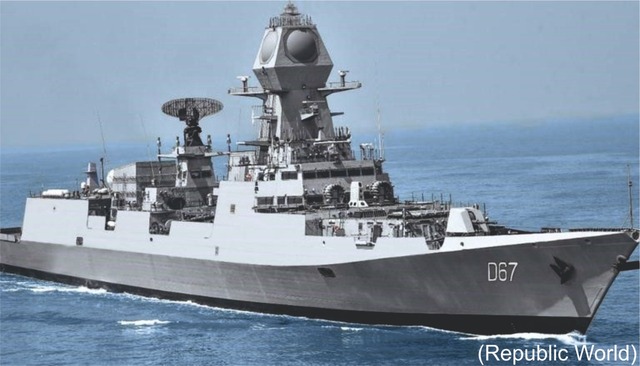India strengthens the CITES protection to Leith Soft-shelled Turtle (GS Paper 3, Environment)

Why in news?
- India’s proposal for transferring Leith’s Softshell Turtle (Nilssonia leithi) from Appendix II to Appendix I of the Convention on International Trade in Endangered Species of wild fauna and flora (CITES) has been adopted by the Conference of Parties (CoP) to CITES in its 19th Meeting at Panama.
Details:
- The 19th meeting of the CoP to CITES is being held in Panama from 14th to 25th November 2022.
- India’s proposal for inclusion of Jeypore Hill Gecko (Cyrtodactylus jeyporensis) in Appendix II and the transfer of Red-Crowned Roofed Turtle (Batagur kachuga) from Appendix II to Appendix I of CITES have also been adopted by the CoP in this meeting.
Leith’s Softshell Turtle:
- Leith’s Softshell Turtle is a large fresh water soft-shelled turtle which is endemic to peninsular India and it inhabits rivers and reservoirs.
- The species has been subject to intensive exploitation over the past 30 years. It has been poached and illegally consumed within India. It has also been illegally traded abroad for meat and for its calipee.
- The population of this turtle species is estimated to have declined by 90% over the past 30 years such that the species is now difficult to find.
Classification:
- It is classified as ‘Critically Endangered’ by the IUCN.
- The species is listed on Schedule IV of the Wild Life (Protection) Act, 1972, which gives it protection from hunting as well as trade. However, poaching and illegal trade of protected turtle species is a major challenge in India with seizures of thousands of specimens reported every year.
- Species level identification of seized specimens is also a challenge. Tortoises and freshwater turtles are targeted for the international pet, meat and calipee trade, as well as for illegal domestic consumption in some areas.
Why transferred to CITES Appendix I?
- The CITES Appendix I listing of this Turtle species would ensure that legal international trade in the species does not take place for commercial purposes.
- It would also ensure that international trade in captive-bred specimens only takes place from registered facilities and further that higher and more proportionate penalties are provided for illegal trade of the species.
- The listing of the Leith’s soft-shell turtle, thereby, strengthens its CITES protection status so as to ensure better survival of the species.
New study on behaviour of charged particles in a magnetic field under ultra-cold temperatures can help control noise in quantum technology
(GS Paper 3, Science and Tech)
Why in news?
- Recently, a new study conducted by Bengaluru-based scientists has thrown fresh light on how a charged particle in contact with an environment in the presence of a magnetic field behaves when it is subjected to ultra-cold temperatures.

Why it matters?
- The latest findings could deepen existing knowledge and explore ways to control noise in the domain of quantum technology.
- Quantum technology is too vulnerable to disturbances in the environment that corrupt the information stored in quantum computers, thus understanding the role of noise in quantum technology and finding ways to control it has long been a challenge for scientists.
Quantum Brownian motion:
- Physicists probed the role of noise in quantum technology and the evolving area called quantum Brownian motion.
- They found how noise in the quantum domain can affect a charged particle in a magnetic field and traced the role of quantum noise in the decay of correlations at ultra-cold temperatures in the context of a charged particle in a magnetic field.
- Brownian motion, the random motion of particles when suspended in a fluid, forms one of the foundational pillars of physics, due to Albert Einstein's seminal work in this area.
- Quantum Brownian motion is a class of possible dynamics for an open quantum, continuous degree of freedom.
Key Findings:
- The study makes predictions about the nature of decay of factors called the position correlation function, the position-velocity correlation function, and the velocity autocorrelation function in the quantum domain accessible via ultra-cold atom experiments.
- The predictions can be tested by considering a charged particle in a magnetic field at ultra-cold temperatures (of the order of a few nano Kelvin) in an optical molasses which mimics a viscous environment.
- While the strength of the magnetic field affects the amplitude of the decay, this decay slows down when quantum fluctuations dominate over thermal fluctuations.
What’s next?
- In continuing theoretical work along similar lines, this group is currently trying to understand the behaviour of a quantum Brownian particle with a spin, a study of which is underway.
INS Trikand, INS Sumitra take part in 'Naseem Al Bahr' exercise
(GS Paper 3, Defence)
Why in news?
- Recently, the Indian Navy's guided missile stealth frigate INS Trikand and offshore patrol vessel INS Sumitra have participated in the 13th edition of bilateral exercise 'Naseem Al Bahr' off the coast of Oman.
The exercise, which was conducted from November 19-24, had three phases -- harbour phase, sea phase and debrief

Details:
- INS Trikand, a frontline frigate, is equipped with a versatile range of weapons and sensors. The ship is a part of the Indian Navy's Western Fleet, based in Mumbai.
- INS Sumitra, a multi-role offshore patrol vessel is part of the Eastern Fleet of the Indian Navy, based in Visakhapatnam.
Key Highlights:
- Activities undertaken during the harbour phase included professional interactions between Indian Navy and Royal Navy of Oman operations teams and friendly sports fixtures between the two navies.
- The sea phase included tactical maritime exercise involving surface action, air defence, maritime surveillance and interdiction/VBSS. These operations helped strengthen interoperability as well as enhancing understanding of each other's procedures.
- The last phase of exercise, debrief, was conducted at the RNO Naval Base at Duqm on November 23.
‘Naseem Al Bahr’:
- The first IN-RNO exercise was conducted in 1993.
- This year marks 30 years of IN-RNO bilateral exercises.



